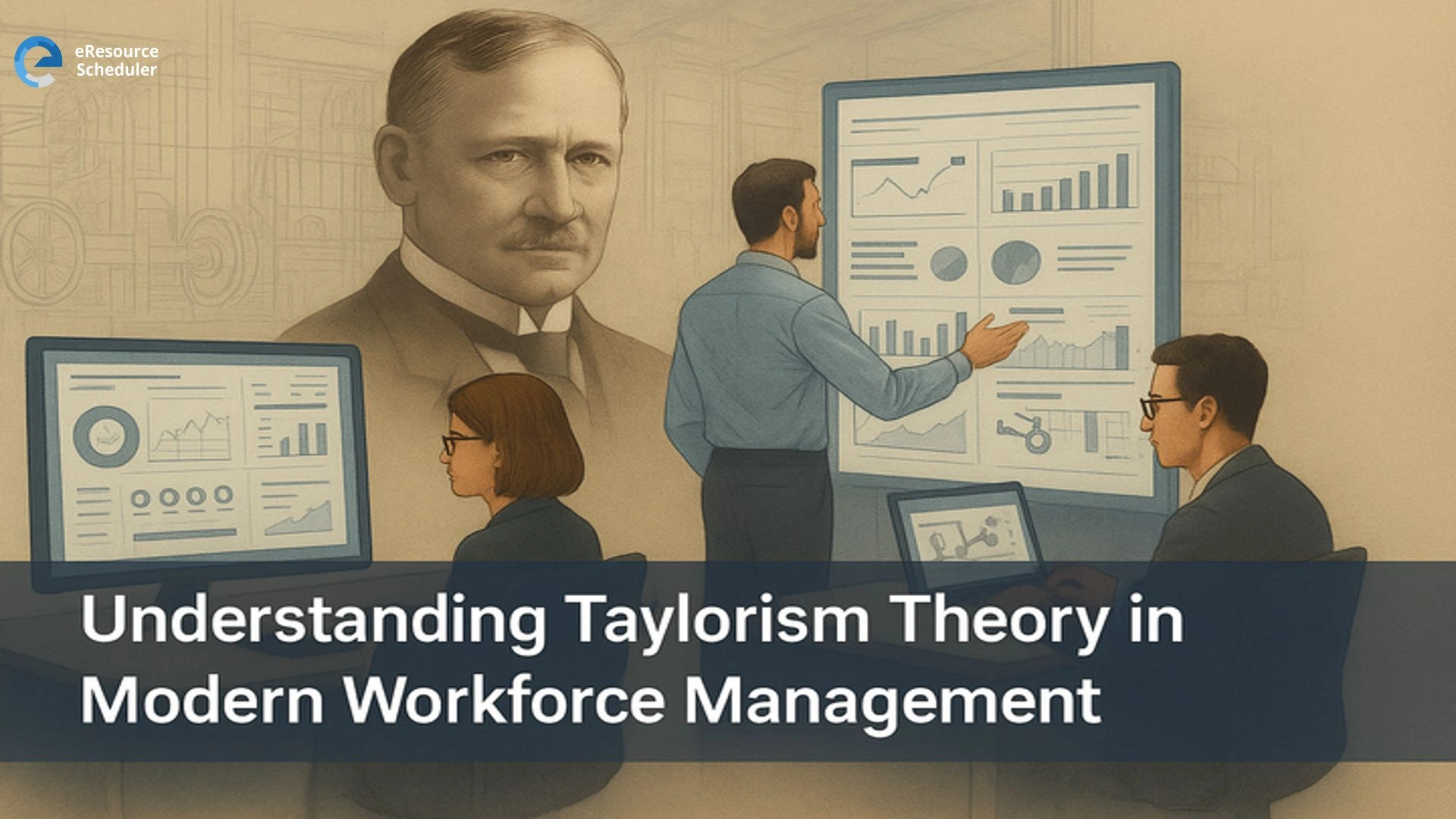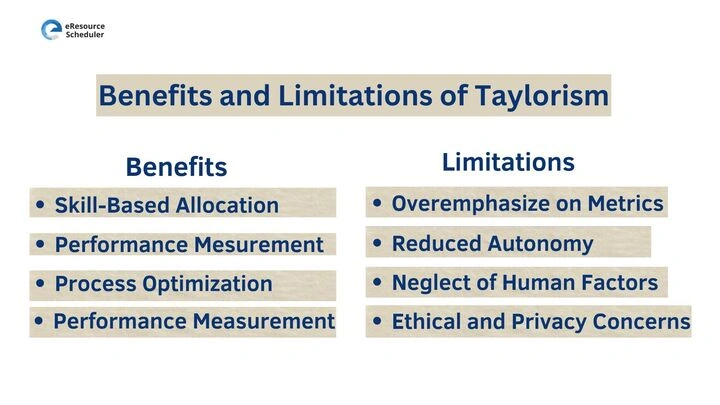
In an era dominated by AI, automation, and hybrid work models, it may seem surprising that a management philosophy from the early 1900s still influences how organizations operate today. Yet Taylorism, also known as Scientific Management, continues to shape workforce strategies in subtle but significant ways. Developed by Frederick Winslow Taylor, this theory revolutionized industrial operations by emphasizing efficiency, standardization, and data-driven decision-making, principles that now underpin modern workforce management systems.
But how exactly does a century-old concept fit into the realities of today’s workplaces? Let’s unpack how Taylor’s ideas evolved, adapted, and, in some cases, re-emerged in the digital age.
At its core, Taylorism was about transforming work from an art into a science. In the late 19th and early 20th centuries, industrial labor was largely unstructured, workers relied on experience or intuition to get things done. Taylor challenged this approach by suggesting that every task could be analyzed, optimized, and standardized for maximum productivity.
He broke down work into measurable components, introduced time-and-motion studies, and argued that the right tools, training, and supervision could vastly improve efficiency. His famous experiments at Midvale Steel Company in Pennsylvania demonstrated that when tasks were designed scientifically, output could increase dramatically without additional strain on workers.
While these ideas were revolutionary for factories during the Industrial Revolution, their impact didn’t stop there. Taylorism laid the groundwork for nearly every major management system that followed, lean manufacturing, Six Sigma, performance analytics, and even today’s workforce optimization technologies.
Taylorism may have been born in the age of steel and steam, but its principles quietly persist in the modern office, factory floor, and even remote work setups. While Taylor focused on stopwatches and clipboards, today’s organizations use algorithms, analytics, and digital platforms to pursue the same goal, enhancing productivity through structured optimization.
The original version of scientific management relied on observing physical movements and timing tasks. In contrast, modern companies analyze workflow data using dashboards and analytics tools. Performance metrics, time tracking, and automation platforms allow managers to make informed decisions about workload distribution and efficiency, essentially a digital form of Taylor’s time-and-motion studies.
For example:
One of the major criticisms of Taylorism was its mechanistic approach to human labor, it treated workers as parts of a machine rather than creative individuals. However, the modern workforce operates within a very different social and psychological context. Companies today balance productivity with autonomy, employee engagement, and mental health.
This shift has led to what some experts call “Neo-Taylorism”, a reimagined model where data-driven efficiency coexists with empathy. Instead of enforcing rigid processes, leaders use insights to identify burnout risks, improve collaboration, and align individual strengths with organizational goals.
The rise of cloud-based platforms, artificial intelligence, and workforce analytics has transformed Taylor’s century-old ideas into intelligent systems capable of real-time decision-making. These tools track performance patterns, forecast staffing needs, and even suggest workload redistribution to maintain balance and avoid overutilization.
In this context, resource management software often acts as the bridge between classic scientific management and future-ready workforce planning, making it possible to achieve precision scheduling while still prioritizing employee satisfaction.

Despite being over a century old, Taylorism still offers lessons for today’s leaders. Its core principles, efficiency, structure, and measurable performance, remain relevant, though their application looks vastly different in a digital, global, and hybrid workforce.
Taylor’s original mission was to replace guesswork with science. In many ways, today’s AI-driven workplace is the ultimate realization of that vision. But where Taylorism once focused on efficiency alone, the modern era demands a balance between performance, well-being, and adaptability.
Scholars often use the term Digital Taylorism to describe how algorithms and analytics now optimize work processes. AI systems can predict demand, assign workloads, and even analyze performance patterns, functions that echo Taylor’s principles but at a scale he could never have imagined.
However, the challenge lies in ensuring that automation enhances, not replaces, human judgment. While algorithms can optimize workflows, they can’t replicate creativity, empathy, or ethical reasoning. That’s where the next phase of Taylorism must evolve.
Modern workforce management strategies increasingly prioritize human experience. The emerging trend isn’t about squeezing more output from each hour but about designing environments where people perform at their best, mentally, emotionally, and professionally.
Recent U.S. workplace studies highlight this shift:
Taylorism’s structured efficiency now coexists with a broader commitment to inclusivity, flexibility, and growth. The future isn’t about choosing between people and productivity, it’s about integrating both.
In 2026, the “science” of management looks less like a stopwatch and more like a data dashboard enriched by behavioral insights. Leaders are expected to interpret numbers through a human lens, using analytics to understand motivation, collaboration, and balance rather than just output.
When used responsibly, data-driven management can empower employees, reveal strengths, and promote fairer decision-making. It represents a new evolution of Taylor’s idea, where efficiency and empathy finally work in harmony.
Taylorism was once about machines, movements, and measurable output. Today, it’s about people, data, and purposeful work. While Frederick Taylor could never have predicted artificial intelligence, cloud computing, or hybrid teams, his pursuit of efficiency lives on in every performance metric and workflow algorithm.
Yet, modern management has evolved far beyond stopwatches and time sheets. Organizations now understand that true productivity comes from balance, where structure meets autonomy, and data supports human potential. Taylor’s legacy reminds us that science can guide management, but empathy must lead it.
If you want to build smarter, more resilient workflows for your teams, book a demo and see how modern resource scheduling supports productivity without compromising people.
1. What is Taylorism in simple terms?
Taylorism, or Scientific Management, is a management theory developed by Frederick Winslow Taylor. It emphasizes efficiency, standardized tasks, and data-driven decision-making, ideas that continue to influence modern workforce management practices today.
2. How does Taylorism apply to today’s workplaces?
Many organizations now apply Taylor’s principles through digital systems that track performance, streamline workflows, and improve collaboration. These methods often appear in resource management software and workforce analytics platforms that help teams plan, schedule, and manage work more efficiently.
3. What are the main advantages of Taylorism?
Taylorism’s strengths include improved resource planning, measurable performance, and better accountability. When used responsibly, these methods support clarity and fairness in team management, especially in remote or hybrid settings.
4. What are the main criticisms of Taylorism?
Critics argue that traditional Taylorism focused too much on output and not enough on people. Modern workforce management approaches now blend data and empathy, ensuring efficiency without neglecting creativity or well-being.
5. How is AI influencing Taylorism today?
Artificial intelligence has transformed how efficiency is measured and achieved. AI-driven tools in workforce management system systems can forecast workloads, optimize schedules, and identify skill gaps, bringing Taylor’s ideas into a new, data-powered era.
6. What is the difference between classical and modern Taylorism?
Classical Taylorism revolved around control and supervision, while modern workforce management encourages autonomy, transparency, and flexible scheduling supported by real-time data insights.
Plan Smarter. Schedule Faster.
Join thousands already using eResource Scheduler to align teams, time, and tasks seamlessly.